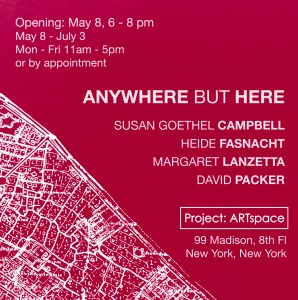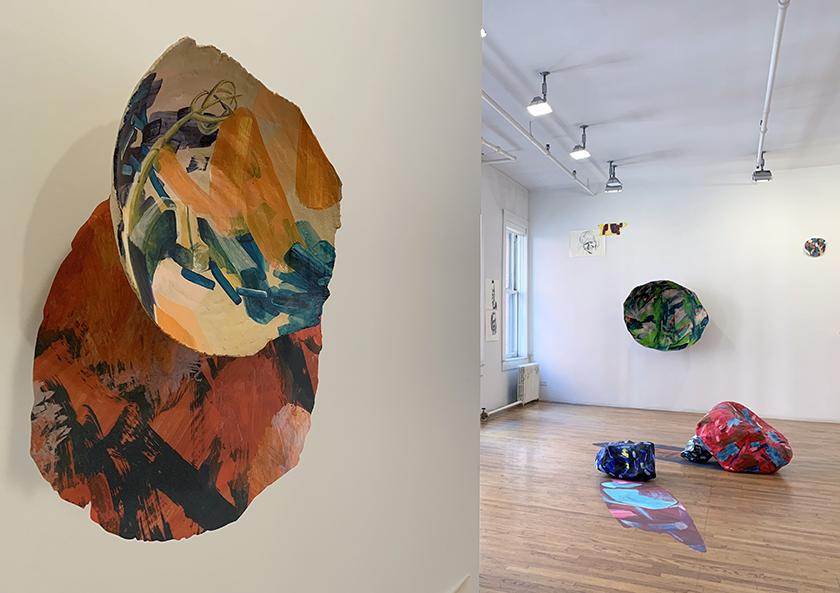
Contributed by Jason Andrew / There is a long history of artists expanding the objectness — that is, the sculptural dimension — of painting. Picasso and Braque introduced this concept in their assemblage works; Vladimir Tatlin broadened it in his “counter-reliefs” alongside Elsa von Freytag-Loringhoventhe, the “Dada Baroness”. For the Dadaists, breaking the picture plane meant breaking tradition, embracing chaos, and rejecting logic.
Decades later, as hardcore ideologies dissipated, Robert Rauschenberg, Bruce Conner, Elizabeth Murray, and many others explored the plasticity of painting in more playful and less doctrinaire ways. In her recent work, Rachael Gorchov revisits old ideologies but with an eye to establishing a new framework for painting. Gorchov is clearly interested in the traditional concerns of color, gesture, and pictorial space. And much like her cousin twice removed, the painter Ron Gorchov — whom she only met in adulthood — Rachael has developed a distinct structure for her work.
Although she was already working in ceramic around 2010, I first encountered her concave paintings (made through a combination of mixed-media including papier-mache and clay) in a solo show she called “Convex Chromascope” at Hunter College in 2015. Her 2017 solo at Owen James (then in Greenpoint) represented a turning point in her work, as brushstroke and shape coalesced into a uniquely warped mise en scene.
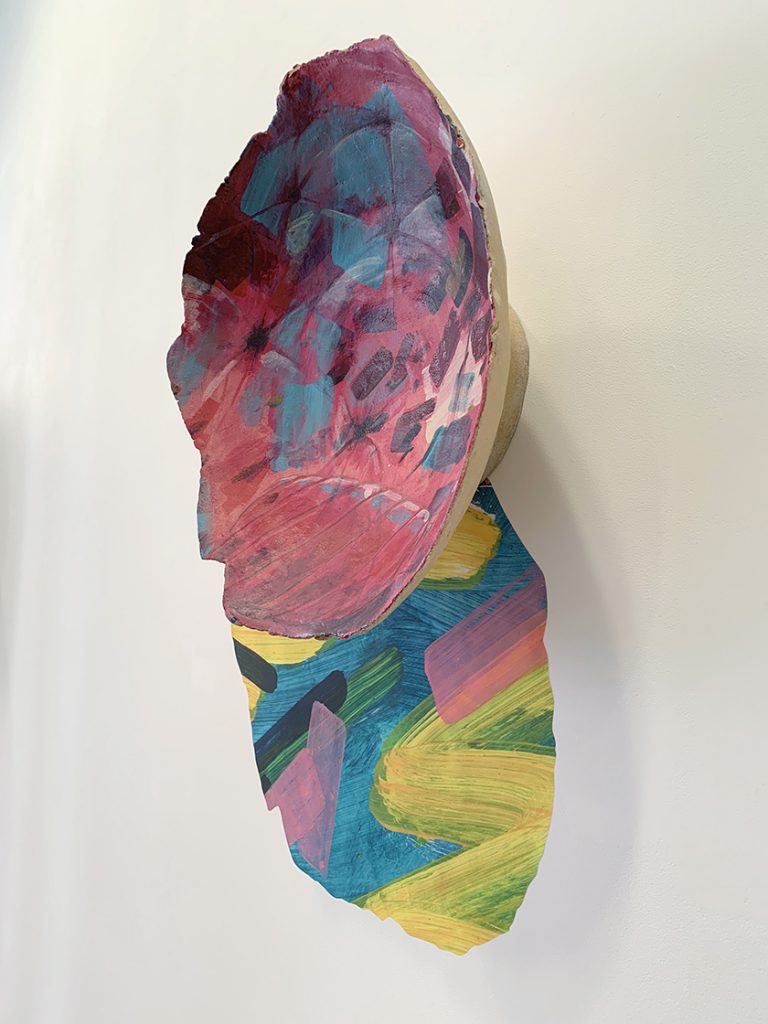
Gorchov has incorporated vinyl printing (high-quality scans of paintings on paper) into her compositions. Mimicking a drop shadow as it cascades from a physical sculpture, the vinyl extends the work’s visual space and drama, confirming its strictly physical flatness while introducing the illusion of motion — just as the sun passing overhead designates time. Jennifer Bartlett’s paintings of the late 1980s incorporated sculptural elements that similarly extended their narrative. Although Gorchov’s work is much smaller in scale, her strategy is just as ambitious as Bartlett’s. And much like Bartlett’s sculptural features, Gorchov’s vinyl is a sardonic reminder of modern painting’s literalness.
Gorchov’s recent exhibition at Owen James Gallery (now located on Wooster Street in Soho), opened on the cusp of the COVID-19 outbreak, and I saw the show just days before it closed in early August. It featured nine wall-mounted works and two works installed on the floor. Gorchov now describes her work as “sculptural painting.”

Vibrantly colored abstract patterns that incorporate visual elements referencing landscape and architectural structures stand out as themes. The large Balustrade, Bandelier National Monument with Column, Hanging Church (2020) features subtle art-historical details of artifacts sketched during an academic trip to sites in Egypt. Stadttempel, Wien with the Philip and Muriel Berman Sculpture Park (2018) combines references to a synagogue in Vienna and a sculpture park in Allentown, Pennsylvania. The slightly larger Cloud Chair, NCC with I. Noguchi (2019) echoes the biomorphic shape and color of one of Noguchi’s rarest furniture designs from the late 1940s.
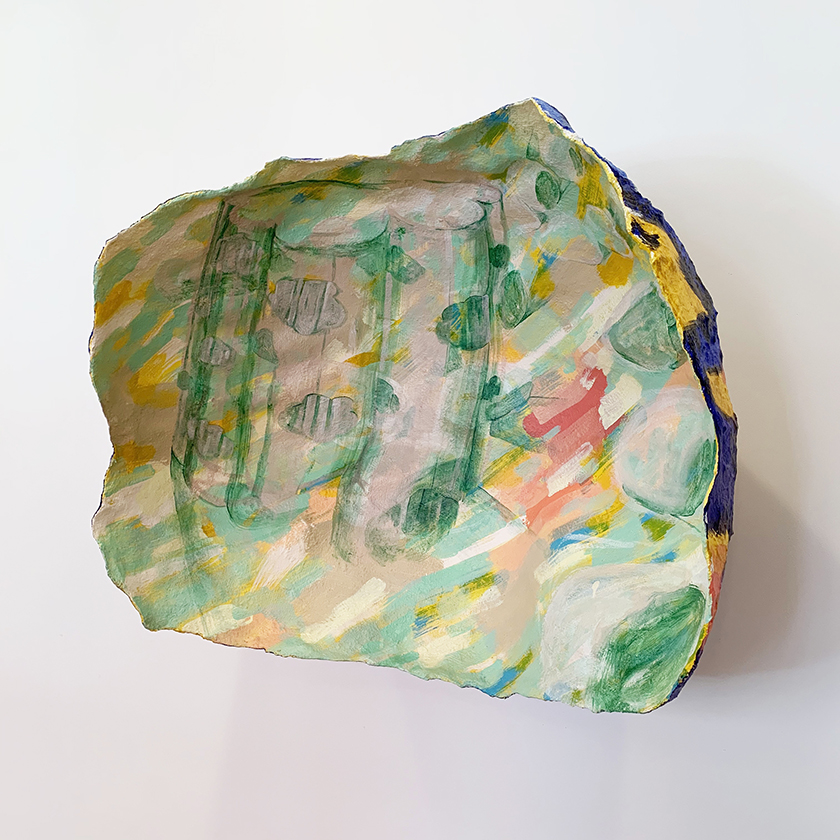
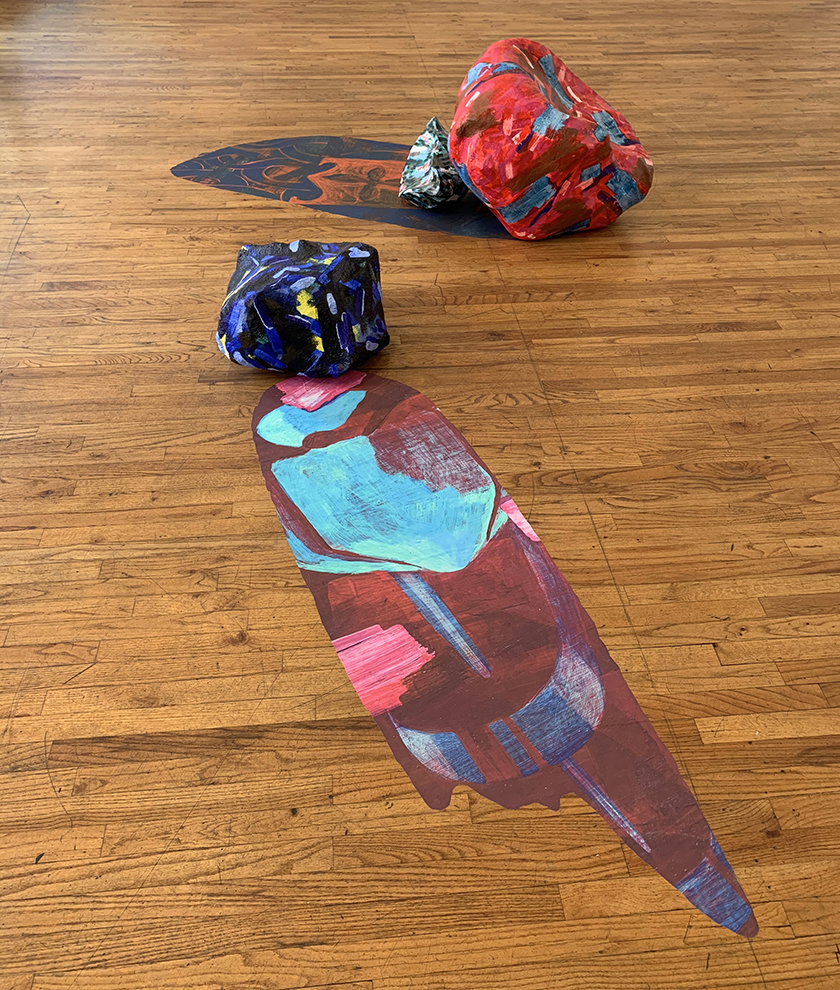
Gorchov’s floor installations are perhaps the most striking and provocative. Longwood Gardens Boxwood with Lehigh Valley Hospital Staircase (2018) features a dark sculptural element casting a long vinyl shadow. Plaster Sculpture, NCC with Carpet, Angelika, NYC (2020) combines a bulky red sculptural element with a second smaller one wedged tightly underneath, with a dark gestural vinyl spread seemingly squished out from the weight of the object. Several small tondo-shaped paintings on ceramic demonstrate Gorchov’s sensitivity to shape and color.
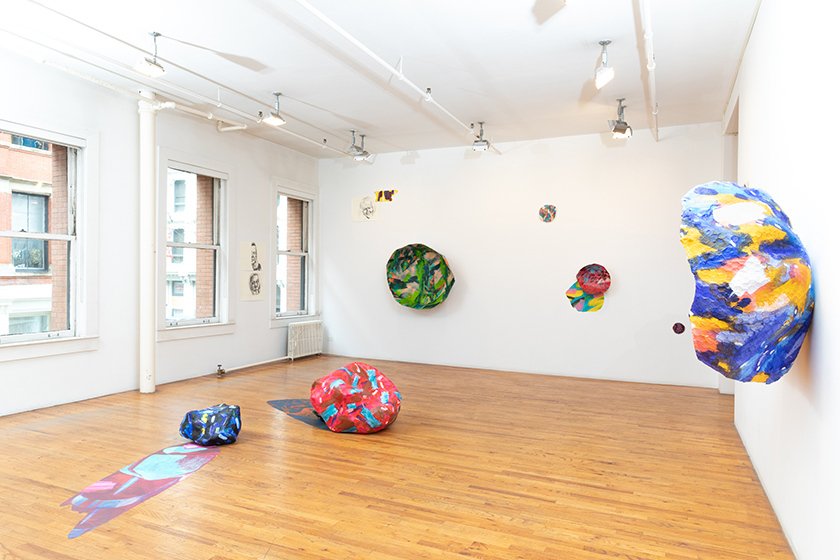
During its closure due to the pandemic, the gallery invited Gorchov to add figurative drawings in charcoal to the original installation. Some of these are juxtaposed with new shaped-plaster paintings. If nothing else, these rudimentary portraits, based on screen-shots captured during Zoom meetings with family and friends, reinforce the compulsion to stay inspired during lockdown. Overall, this exhibition clearly establishes Gorchov as one of the most inventive artists engaged in expanding the picture-language and the physical objectness of painting.
“Rachel Gorchov: Concavity,” Owen James Gallery, New York, NY. Through August, 2020.
About the author: Jason Andrew is an independent scholar, curator, and producer. Follow him on Twitter at @jandrewARTS.

